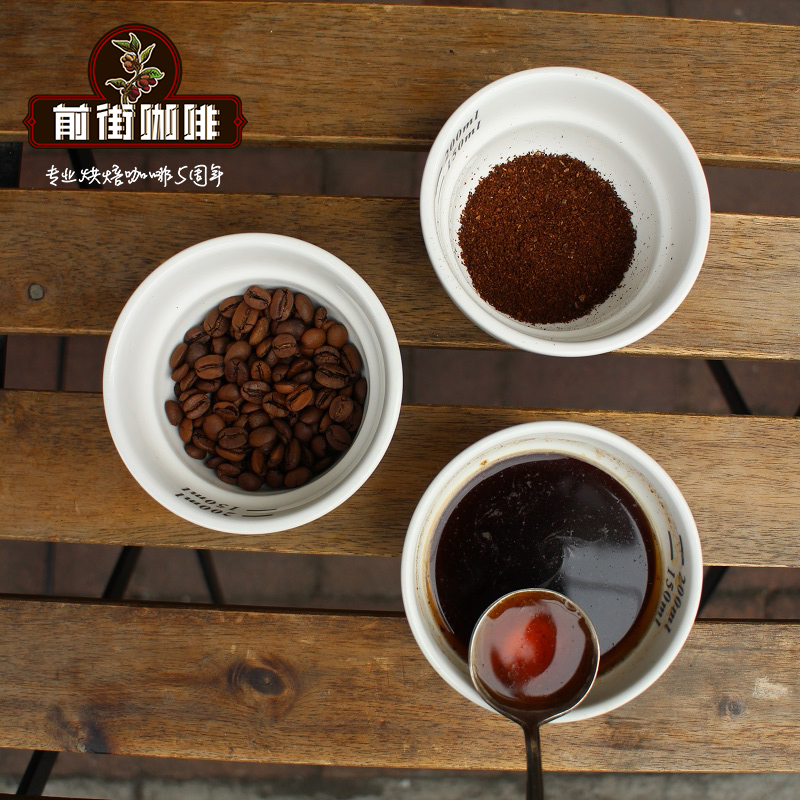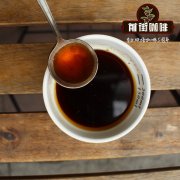What are the flavor and taste characteristics of Robusta coffee beans? [Robusta] do coffee beans have high acidity?

Professional coffee knowledge exchange more coffee bean information please follow the coffee workshop (Wechat official account cafe_style)
What are the flavor and taste characteristics of Robusta coffee beans? [Robusta] do coffee beans have high acidity? Can I make spaghetti beans?
Robasta is a high-yielding and pest-tolerant plant with a height of up to 12 meters and grows best in warm and humid climates. Coffee made from robastian beans is quite textured, with a slightly pungent earthy smell, while caffeine is high, accounting for 2.4% of the weight. 2.8%. Although there are many suppliers selling Robasta, this kind of coffee beans do not make the highest quality coffee.
"arabica" coffee beans are always classified as "good", while its distant relative "Robusta" coffee beans are often classified as "bad". We may describe it this way: if Arabica is a gift from angels, Robusta is like the booger of the devil, always despised and spurned by coffee gluttons.
Why is Robusta so notorious? Robusta beans, which are round in appearance and look like soybeans at first glance, are also known as thick and strong beans. They have strong resistance to diseases and insect pests, large output and low price. The exquisite coffee industry used to have a very poor impression of Robusta because it usually does not have a charming and meticulous flavor.
The bigger problem is that because the setting is a low-cost product, most of the planting methods are very rough, resulting in a bad smell. It often smells like dirt, dirt, and sometimes even a smell like charred tires and burning plastic.
Ten years ago, I had a chance to taste several cheap Vietnamese robusta beans, some of which were unforgettable because they were like charred wheat tea flavored with tires, and I couldn't help spitting them out with the other nine bad flavors. I don't want another sip.
If Robusta beans are so bad, why discuss it? That's a good question. As mentioned at the beginning, everything has its advantages and disadvantages. Good beans take you to heaven, rotten beans make you beat your heart. This is true of Arabica, and Robusta is no exception.
Under the tide of refined coffee in recent years, exquisite robusta beans with high standard treatment have appeared in the world. The representative of boutique India Kappi Royale beans is India's Robusta (Robusta "Kappi Royale" Robusta).
Kappi Royale means "top grade". At present, there are at least four (and growing) private coffee farms in India to grow and produce high-quality "Coffee Royal" and "Kappi Royale" Robusta coffee beans with refined Arabica standards and procedures! It includes exquisite whole water washing treatment and Pulp Natural "honey treatment" (mucous membrane drying and semi-washing treatment), which is popular in recent years.
The advent of the "Coffee Royal" grade exquisite Robusta beans has undoubtedly begun to change the world's impression of Robusta! Most people who have drunk it will be surprised by its thick and clean characteristics. Because of the exquisite planting and handling procedures, the flavor of the Royal Coffee Robusta is mostly quite clean, without the intrusive flavor of the cheap Robusta (off-flavors).
If you want to ask the country or region that loves Robusta beans most, the first place is Italy, the hometown of espresso! If you narrow it down, to be more precise, the largest use of robusta beans is in southern Italy, such as Palermo, Naples and Sicilia. In fact, in southern Italy, most of the coffee people drink contains a considerable proportion of robusta beans. The content of 30% to 60 is commonplace, and the Robusta content of some formula beans is as high as 80% or even 100%!
Open the table of beans supplied by local wholesalers of raw coffee beans in Italy, and you will see a list of more than a dozen, or even as many as two dozen, raw beans from all over the world, for local coffee roasters to choose from. This phenomenon does not exist in other parts of the world, such as the United States and Canada, Northern Europe, Japan and even Taiwan.
You may wonder why the Italians mix a lot of robusta in Arabica beans. Generally speaking, Italians mix with Robusta in order to increase the Crema content of Espresso. This is only half true, and there is another little-known reason.
It turned out that southern Italy used to be a relatively poor region, where people could only afford cheap coffee, so at first it was mixed with Robusta beans simply to reduce costs. However, after years of massive baking and blending of Robusta, coupled with Italy's natural sensitivity to cooking, they found that Robusta beans have many qualities that Arabica beans do not have. as long as you are familiar with and fully master these qualities, a good cook (coffee roaster) will be able to serve magical dishes (Italian coffee beans). Compared with 44 pairs of chromosomes in Arabica beans, Robbosa beans have only 22 pairs of chromosomes, with caffeine contents of 1.5% and 2.8%, respectively. The two are completely different varieties and cannot be mixed, which explains why there are many complete differences between the two.
The Robusta is born without the elegant aroma of Arabica beans, replaced by a thicker, lower taste, as well as peanut butter, hazelnut-like walnuts, peanuts, hazelnuts, wheat and oysters.
Important Notice :
前街咖啡 FrontStreet Coffee has moved to new addredd:
FrontStreet Coffee Address: 315,Donghua East Road,GuangZhou
Tel:020 38364473
- Prev

What are the derived varieties of Robusta coffee beans? What are the planting advantages of Robusta coffee beans?
Professional coffee knowledge exchange more coffee bean information please follow the coffee workshop (Wechat official account cafe_style) what are the derivative varieties of robusta coffee beans? What are the advantages and characteristics of robusta coffee beans? In terms of shape, Arabica beans are long and flat, with an S-curve in the central line, Rob.
- Next

Can Robusta be used as a base bean for Italian blending? with Robusta as the base.
Professional coffee knowledge exchange More coffee bean information Please pay attention to coffee workshop (Weixin Official Accounts cafe_style) Can Robusta be used as a base bean for Italian blending? What is the taste of the blend beans with Robusta as the base? Although Robusta is one of the three major coffee varieties, its chromosome number is different from Arabica, so it presents characteristics of large phase diameter.
Related
- Detailed explanation of Jadeite planting Land in Panamanian Jadeite Manor introduction to the grading system of Jadeite competitive bidding, Red bid, Green bid and Rose Summer
- Story of Coffee planting in Brenka region of Costa Rica Stonehenge Manor anaerobic heavy honey treatment of flavor mouth
- What's on the barrel of Blue Mountain Coffee beans?
- Can American coffee also pull flowers? How to use hot American style to pull out a good-looking pattern?
- Can you make a cold extract with coffee beans? What is the right proportion for cold-extracted coffee formula?
- Indonesian PWN Gold Mandrine Coffee Origin Features Flavor How to Chong? Mandolin coffee is American.
- A brief introduction to the flavor characteristics of Brazilian yellow bourbon coffee beans
- What is the effect of different water quality on the flavor of cold-extracted coffee? What kind of water is best for brewing coffee?
- Why do you think of Rose Summer whenever you mention Panamanian coffee?
- Introduction to the characteristics of authentic blue mountain coffee bean producing areas? What is the CIB Coffee Authority in Jamaica?

